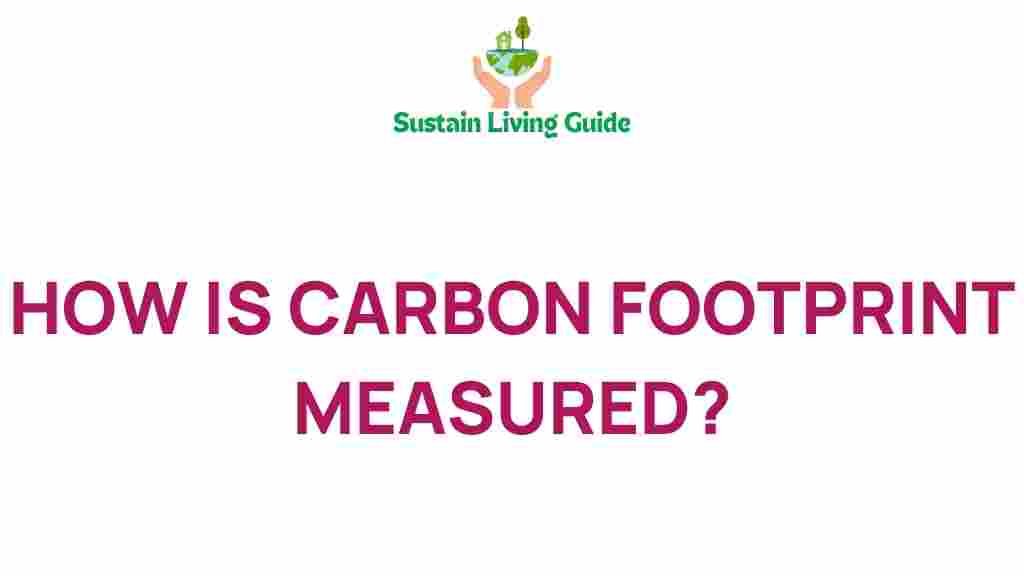Unraveling the Mystery: How is Carbon Footprint Measured?
In today’s world, the term carbon footprint is becoming increasingly prevalent as individuals and businesses alike seek to understand their impact on the environment. But what exactly does it mean, and how is it measured? In this comprehensive guide, we will explore the ins and outs of measuring a carbon footprint, providing you with the knowledge you need to assess and reduce your environmental impact.
What is a Carbon Footprint?
A carbon footprint is defined as the total amount of greenhouse gases, including carbon dioxide (CO2) and methane (CH4), that are emitted directly or indirectly by an individual, organization, event, or product. This measurement is typically expressed in equivalent tons of carbon dioxide (CO2e).
Understanding your carbon footprint is crucial for identifying ways to reduce emissions and contribute to a more sustainable future. By measuring our environmental impact, we can take proactive steps to minimize our footprint and promote eco-friendly practices.
Why Measure Your Carbon Footprint?
Measuring your carbon footprint is essential for several reasons:
- Awareness: It helps increase awareness of personal and organizational environmental impacts.
- Benchmarking: Allows for benchmarking against industry standards or national averages.
- Improvement: Identifying areas for improvement can lead to reduced energy costs.
- Accountability: It holds individuals and organizations accountable for their emissions.
- Sustainability Goals: Aids in setting and achieving sustainability targets.
How is Carbon Footprint Measured?
Measuring a carbon footprint can be broken down into several key steps. The process involves data collection, emission factor application, and calculation to arrive at a total footprint. Here’s a step-by-step guide:
Step 1: Define the Scope
The first step in measuring a carbon footprint is to define the scope of measurement. This can include:
- Personal Carbon Footprint: Emissions from daily activities like driving, household energy use, and waste.
- Organizational Carbon Footprint: Emissions generated from business operations, including manufacturing, transportation, and waste management.
- Product Carbon Footprint: Emissions associated with the entire lifecycle of a product, from raw material extraction to disposal.
Step 2: Gather Data
Next, gather data relevant to the defined scope. This includes:
- Energy Consumption: Collect data on electricity, gas, and other energy sources used.
- Transportation: Record miles traveled by car, plane, or public transportation.
- Waste Production: Measure the amount of waste generated and how it is disposed of.
- Water Usage: Document water consumption, as water treatment and distribution also contribute to emissions.
Step 3: Apply Emission Factors
Emission factors are coefficients that quantify the emissions produced per unit of activity. For example:
- Electricity usage might have a specific CO2e per kilowatt-hour (kWh).
- Fuel consumption can be measured in grams of CO2e per mile.
These factors can be obtained from resources like the U.S. Environmental Protection Agency or the Intergovernmental Panel on Climate Change (IPCC).
Step 4: Calculate the Carbon Footprint
Once you have your data and the appropriate emission factors, it’s time to perform the calculations. This typically involves multiplying the amount of each activity by its corresponding emission factor and summing all the results. Here’s a simple formula:
Carbon Footprint (CO2e) = Σ (Activity Data × Emission Factor)
For example, if you drove 1,000 miles in a car that emits 404 grams of CO2 per mile, the calculation would look like this:
1,000 miles × 404 grams/mile = 404,000 grams of CO2
To convert grams to tons, divide by 1,000,000:
404,000 grams ÷ 1,000,000 = 0.404 tons CO2
Step 5: Analyze and Report
After calculating the carbon footprint, it’s essential to analyze the results to identify high-impact areas. Create a report summarizing your findings and potential improvement strategies. This report can serve as a baseline for future assessments.
Troubleshooting Common Issues in Measuring Carbon Footprint
While measuring your carbon footprint can be straightforward, you may encounter some common issues. Here are troubleshooting tips:
- Incomplete Data: Ensure you have comprehensive data for all relevant activities. If data is missing, make educated estimates where necessary, but document assumptions.
- Inaccurate Emission Factors: Cross-verify emission factors from multiple reliable sources. Using outdated or incorrect factors can lead to inaccurate results.
- Complex Calculations: If calculations are overwhelming, consider using online carbon footprint calculators or software tools to streamline the process.
Tools for Measuring Carbon Footprint
Fortunately, several tools and resources are available to assist in measuring your carbon footprint. Some popular options include:
- Online Calculators: Websites like Carbon Footprint Calculator provide user-friendly interfaces for quick assessments.
- Mobile Apps: Apps like “My Carbon Footprint” allow users to track their emissions on the go.
- Consulting Services: For organizations, hiring a sustainability consultant can provide tailored insights and strategies.
Conclusion
In conclusion, understanding how to measure your carbon footprint is an essential step towards promoting sustainability and reducing environmental impact. By following the steps outlined in this article, you can gain a clearer picture of your emissions and identify strategies for improvement. Remember, every small effort counts towards creating a greener planet. Whether you are an individual seeking to lower your personal impact or a business aiming to meet sustainability goals, measuring your carbon footprint is a vital first step.
For more information on environmental sustainability and carbon footprint reduction strategies, check out our other articles or consult with experts in the field.
This article is in the category Greenhouse and created by SustainLivingGuide Team
